Welcome to our complete guide on how to grow Anthurium indoors! Whether you’re a seasoned plant parent or just starting out, this article will provide all the essential tips and tricks.
What is an Anthurium?

Did you know that the common Flamingo flower that you see in nurseries is only one of twelve different Anthuriums that you can grow?
©Shurik the Creator/Shutterstock.com
People sometimes refer to anthuriums as Flamingo Flowers, Painted Tongue Plants, or Tail Flower Plants. They are a genus of over 800 species of flowering plants native to the tropical regions of Central and South America. The anthurium that most people grow as an indoor houseplant is Anthurium andreanum, with shiny red flowers.
Anthuriums have bright green leaves with vibrant red, pink, or white blooms that resemble flamingos or pearly tongues. The flowers are spathes, similar to a peace lily, that last for several months at a time.
In their natural environment, out in the rainforest, these plants are epiphytes. An epiphyte is a type of plant that grows on another object for support. The anthurium family of plants use the crevices of trees as their home but do not take any nutrients from them. This allows them to survive in otherwise inhospitable conditions, such as steep cliffs or high up in the canopy where there isn’t much soil available. As a result, they are extremely strong and resilient plants. If you want to know how to grow anthurium indoors, read on!
How to Grow Anthurium—Light
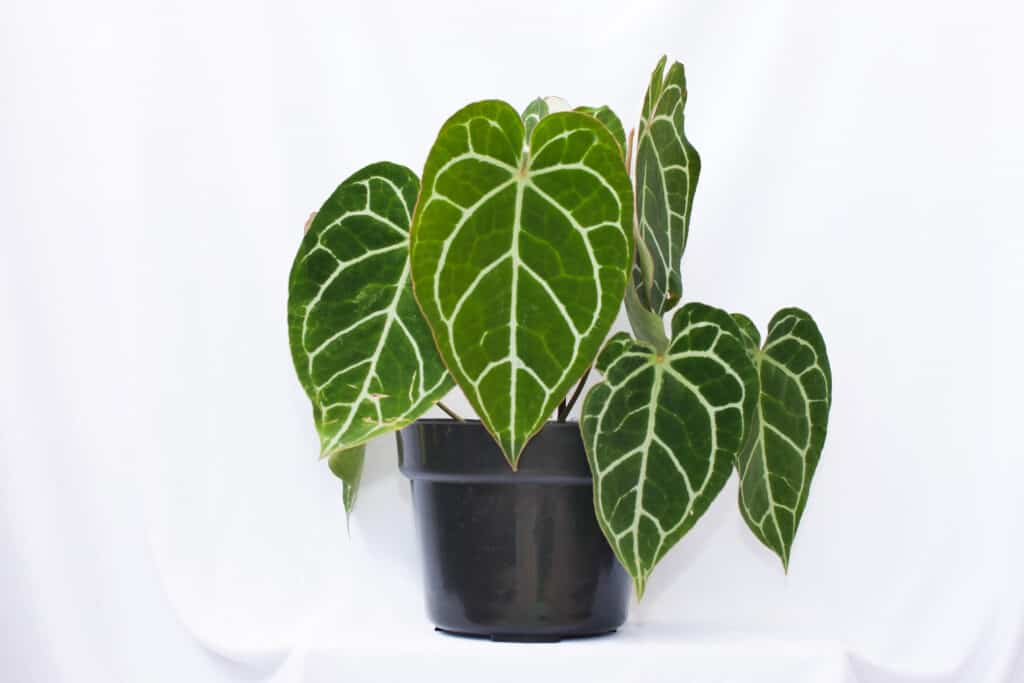
Anthurium crystallinum grows well in bright indirect light. Try an east or west-facing window.
©Masdim Photography/Shutterstock.com
The best indoor light conditions for an anthurium are bright but indirect light. The leaves can burn if exposed to the hot rays of the sun, especially in a southern window. Place your anthurium in an east or north window, right up against the glass. Or you can put it in a west-facing window, 12-36 inches away from the glass.
You can also use artificial light with a full spectrum bulb and at least 5,000 kelvins. An anthurium plant needs 12-16 hours of light per day to thrive indoors. You can use a combination of natural and artificial lighting to achieve this. For example, place your anthurium near a window in the morning and then use a timer for the artificial light source for the rest of the day. Make sure that whatever type of light you choose is bright but not too intense for your plants.
Temperature and Humidity

If your house has dry air, try a humidifier near your anthurium.
©DimaBerlin/Shutterstock.com
The ideal temperature for an anthurium is 75 to 85°F. Do not expose the plant to temperatures under 45°F, or it will damage the foliage. Because they are from the tropics, they like to sit outside during the hot summer months and come indoors for winter.
Anthuriums need a humid environment to thrive. 50 percent humidity or more is ideal. You can increase the humidity in your home by placing the pot on top of a tray filled with pebbles and water or misting it regularly. Keep an eye on the soil so that it’s never soggy, as too much moisture will cause root rot. If you live in an area with naturally low humidity, consider investing in a humidifier for your houseplant collection.
Type of Soil
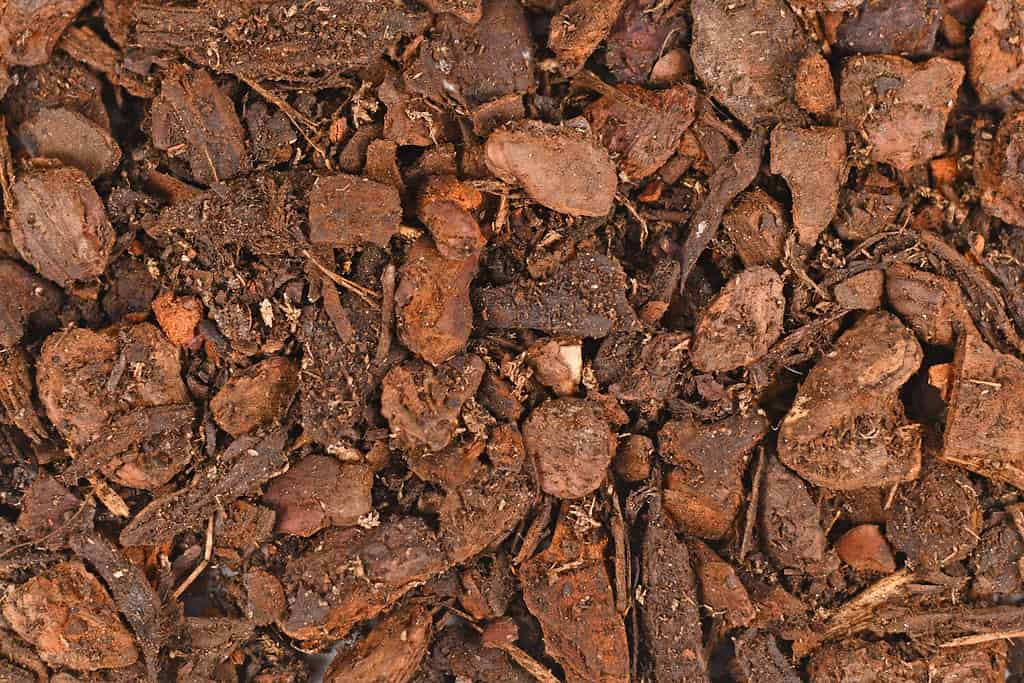
When learning how to grow an anthurium, soil choice is important. They like a loose and airy growing medium with a lot of bark.
©Firn/Shutterstock.com
The best soil for anthuriums is a well-draining, peat-based potting mix. You should also add in some orchid bark and perlite to create more aeration and drainage. Make sure the container you use has plenty of holes on its bottom so that water can easily flow out. If you’re using a store-bought soil mixture, it doesn’t hurt to amend it with compost or other organic materials like coconut fiber. They like potting soil that is chunky, airy, and loose.
How to Grow Anthurium Indoors—Watering

This beautiful Anthurium andraeanum likes to dry out halfway before you water it again.
©v_zaitsev/iStock via Getty Images
Allow your anthurium plant’s soil to dry out 50 percent before you water it again. If you have planted it in a chunky soil full of bark, it will likely take several weeks to be dry enough to need watering. Anthurium plants have fleshy, thick roots that easily rot in wet soil. This plant prefers a wet and dry cycle, similar to how it would grow in nature.
If you are nervous about overwatering, invest in a soil water meter. These devices have a probe that sticks into the soil and can tell you whether the bottom of the pot is still wet or dry. They are a very handy tool, especially since root rot is the number one cause of death for houseplants.
Fertilizer
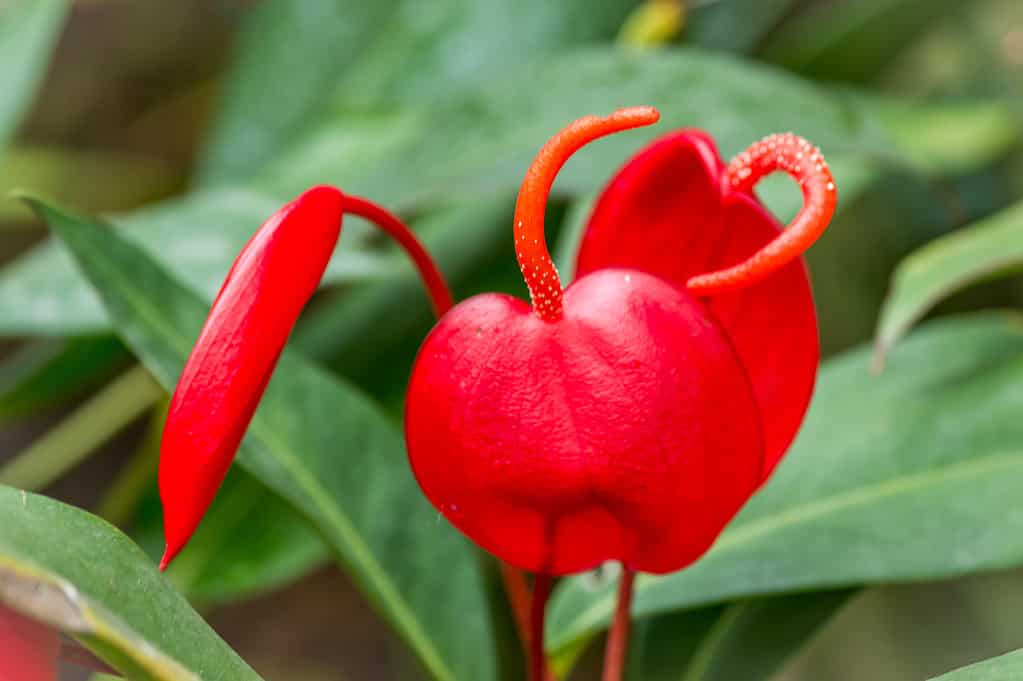
The pigtail plant, or Anthurium scherzerianum, does not like too much fertilizer at all.
©Arijeet Bannerjee/iStock via Getty Images
Anthuriums are pretty sensitive to overfertilizing. They much prefer to be underfed than overfed. So, err on the side of caution. You will have success if you dilute a liquid or water-soluble fertilizer to quarter strength and apply it only every other wearing during spring and summer. Do not feed anthuriums at all during the fall or winter seasons. If the leaves start getting yellow spots, you have overfed. If you use a soil blend with a granular slow-release fertilizer, you may not need to feed the plant for a few years at all.
Pruning

Anthurium Veitchii will lose a leaf before it grows a new one. So don’t panic if a leaf starts to whither.
©Natalia Shishkova/iStock via Getty Images
It is normal and natural for the leaves and flowers of your anthurium to age, yellow, and die. After one leaf dies back, a new one will sprout forth. The same thing happens with the spathes. One will start to die as a new one starts to emerge. To encourage growth, wait until the leaf or flower is turning brown, and then snip it off as close to the main stem as you can. There are no other pruning chores needed for an anthurium.
How to Grow Anthurium—Pests and Diseases

If you see faint webbing on your houseplants, act quickly; you may have spider mites.
©Robert Lessmann/Shutterstock.com
Anthuriums can be prone to common plant pests and diseases, such as mealybugs, aphids, scale insects, thrips, and spider mites. These pests can be treated with a natural insecticidal soap or neem oil. You should also regularly inspect your plant for signs of disease, such as blight, powdery mildew, or root rot. Treating these issues promptly is essential to keeping your anthurium healthy and thriving indoors.
How to Propagate an Anthurium
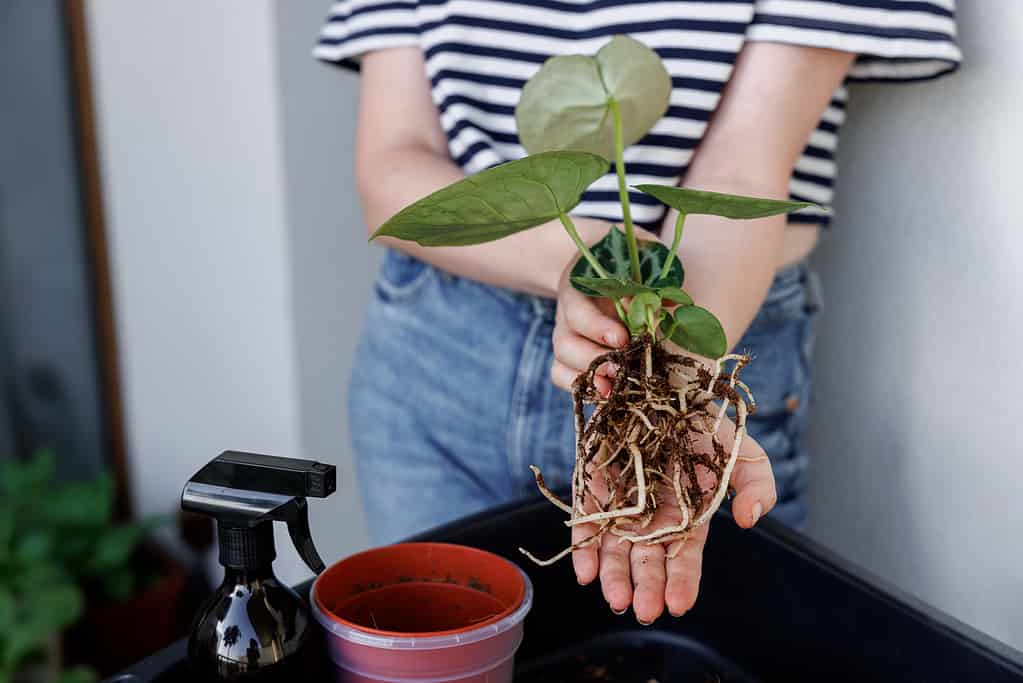
The easiest way to propagate anthuriums is by splitting them via division when repotting. One of the best parts of learning how to grow anthuriums is propagating free plants.
©Damian Lugowski/iStock via Getty Images
Anthuriums can be propagated either by division or through stem cuttings.
Division: To propagate an anthurium through division, you will need to carefully separate the root system of a mature plant into two or more sections. Make sure that each section has at least one healthy leaf and a few roots attached before replanting in fresh soil.
Stem Cuttings: You can also propagate your anthurium by taking stem cuttings from a mature plant. Cut a stem from the anthurium just below a leaf node, and then remove all leaves except for two or three of the topmost ones. Dip the cut end in rooting hormone powder to help encourage root growth before planting it in the soil. Keep the soil moist until you can see new growth emerging, at which point you should reduce watering as needed.
12 Types of Anthurium Plants
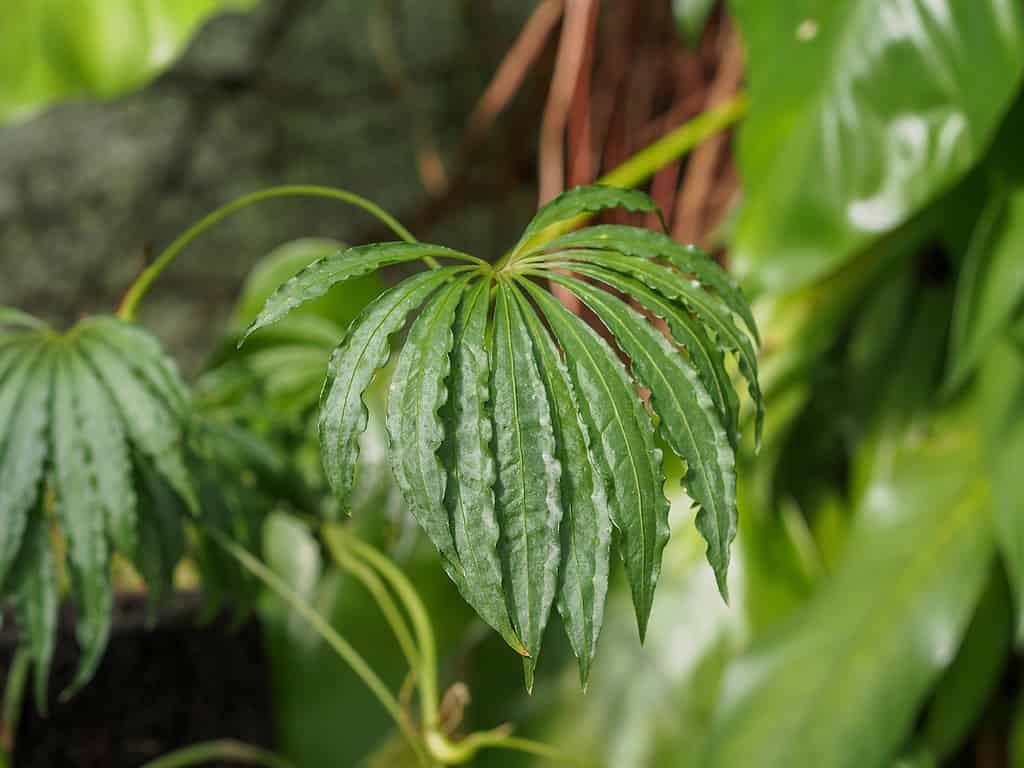
This unique Anthurium polyschistum has deeply lobed leaves that don’t look like its cousins.
©Sungsu Shin/iStock via Getty Images
The most common type of anthurium to find in a nursery or florist shop is Athurium andreanum. But it is not the only one! There are several types of anthuriums that produce incredibly beautiful (and sometimes gigantic) leaves.
1. Anthurium andreanum
This is the typical flamingo flower with tall flowers (spathes) in red, pink, or white. It is very easy to find and usually inexpensive.
2. Anthurium warocqueanum
The common name for this one is Queen Anthurium. It has dark green leaves with bright white veins and flowers that you barely notice.
3. Anthurium crystallinum
This lovely plant has gigantic heart-shaped leaves that can reach 12 inches long. The veins are either white or lime green.
4. Anthurium scherzerianum
People call this anthurium Pigtail Plant because the leaves and spathes curl upward in a curious manner.
5. Anthurium veitchii
Also called King of the Anthuriums because of its size. Its ripply, lance-shaped leaves can grow 6 feet long.
6. Anthurium clarinervium
This plant looks very similar to A.crystallinum, with lovely green heart-shaped leaves.
7. Anthurium magnificum
Another A. crystallinum and A. clarinervium look alike but much larger.
8. Anthurium forgetii
This plant does not grow beautiful flowers but rather round leaves that narrow to a point in green and white.
9. Anthurium vittarifolium
This anthurium looks awesome in a hanging basket as it grows in a trailing habit.
10. Anthurium metallicum
This variety has the darkest of green leaves that are lance-shaped with white veins. They grow about 20 inches tall.
11. Anthurium polyschistum
This anthurium stands out from the family as truly unique. It has leaves that look a lot like marijuana or money tree, deeply lobed and split.
12. Anthurium luxurians
Here is another odd anthurium. The leaves are leathery and deeply ridged and either purple or dark red.
Thank you for reading! Have some feedback for us? Contact the AZ Animals editorial team.








